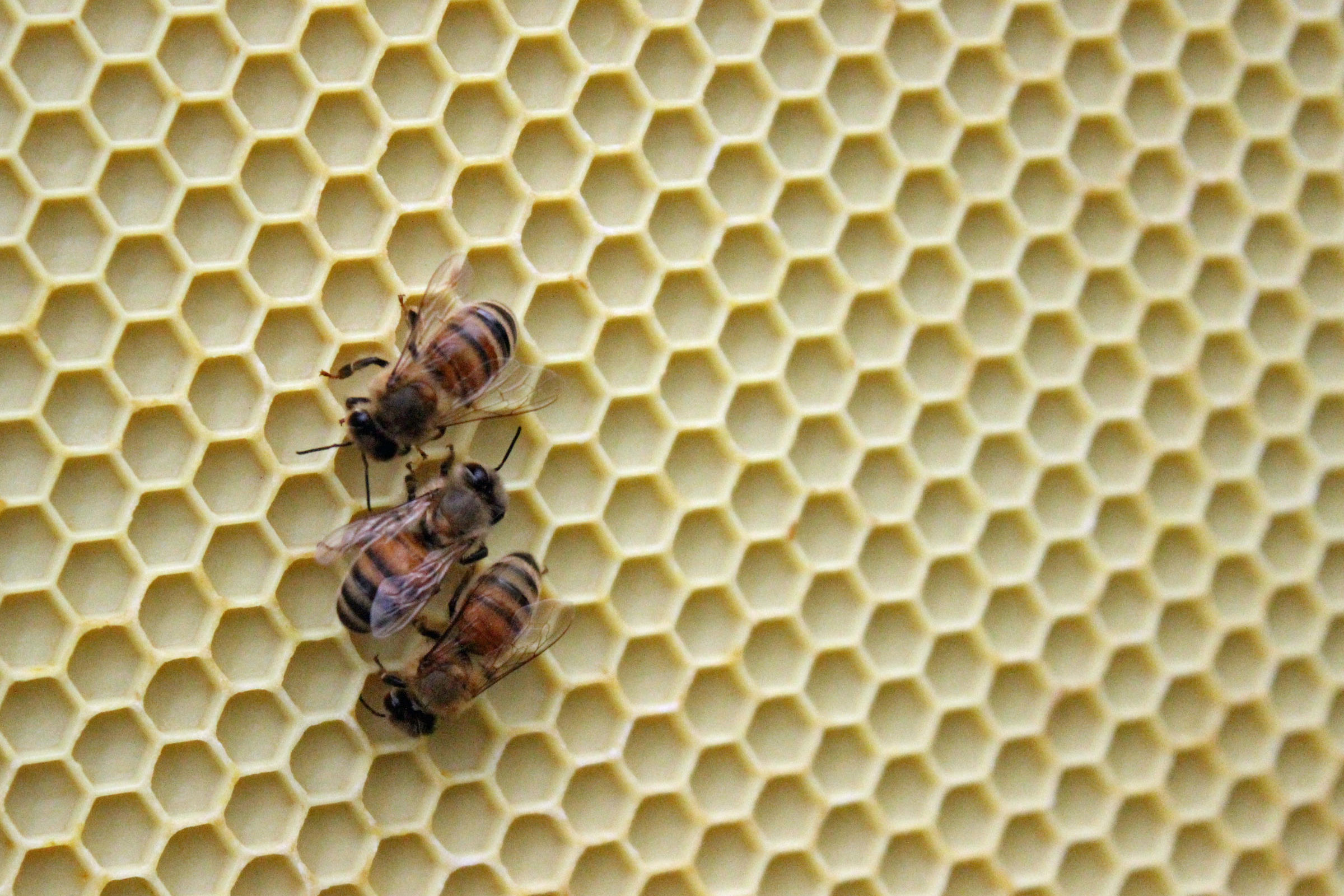Struggling Honeybees Get Some Help from Big Data
As prolific pollinators, honeybees are to thank for about one out of every three bites of food you eat. But bees are in big trouble: They’re getting hit hard by pests, pesticides, diseases and habitat loss. To help keep tabs on what’s going on with bees, scientists at Grand Valley State University are using new technology to track the health of hives.
“I think that the bees are the tip of the iceberg that tell us so much about the pulse of this earth we live on,” says biologist Anne Marie Fauvel.
Fauvel and her colleague Jonathan Engelsma, who’s a computer scientist, are both beekeepers. And together, they’ve designed a way to learn about the health of a hive from its weight.
Fauvel points to a metal scale on the bottom of a hive. “The hive is at 122.6 pounds this morning,” she says. “So there are bees out there foraging.”
Englesma says they can push a button on the scale, download the data to a phone app, and then all that data gets uploaded to the cloud.
“Basically, it’s a platform that lets us monitor the colony 24-7,” Englesma says. “If it’s gaining weight during a period of the year when there’s pollen and nectar sources, we’d expect the weight to be going up—or at least changing regularly.”
He says you can also see times when a bunch of bees leave the hive. That can signal that something is wrong.
“It’d be really great, especially if you’re a beginning beekeeper, to get a notification on your phone that says, you know, there’s nectar flow in your area—be sure to give your bees enough space. Or, there are high mite counts detected in your locality—be sure to monitor your colonies and intervene if necessary.”
The team is also launching a new project to keep track of what kind of pollen bees bring back to the hive. They hope to use it to help beekeepers keep tabs on the places with the best nutrition.
Reporting by Rebecca Williams / Michigan Radio
Paris Climate Treaty Could Be Binding Regardless of U.S. Election
Donald Trump has said that—if elected—he would walk the U.S. away from the historic Paris climate agreement signed by 195 countries last year. This is perhaps not surprising given that Trump has called climate change a hoax perpetrated by the Chinese.
But Trump would likely face huge challenges withdrawing from the Paris accord. That’s because the United Nations recently sped up its implementation of the plan. This week, enough countries—including France and Germany—ratified the treaty, meaning it will likely be a legally binding international agreement by the November election.
“That means it’ll take at least four years for any U.S. president to unwind our obligation under international law,” says the Council on Foreign Relations’ Varun Sivaram, who has advised Hillary Clinton’s campaign on climate and energy policy.
But Trump could still reverse some of the policies the U.S. would likely use to meet its climate change obligations—including fuel efficiency standards and the Obama administration’s Clean Power Plan, which limits carbon emissions from the power sector.
In contrast, Clinton has said she would continue the Obama administration’s efforts to reduce carbon emissions and fight climate change.
Reporting by Reid Frazier

